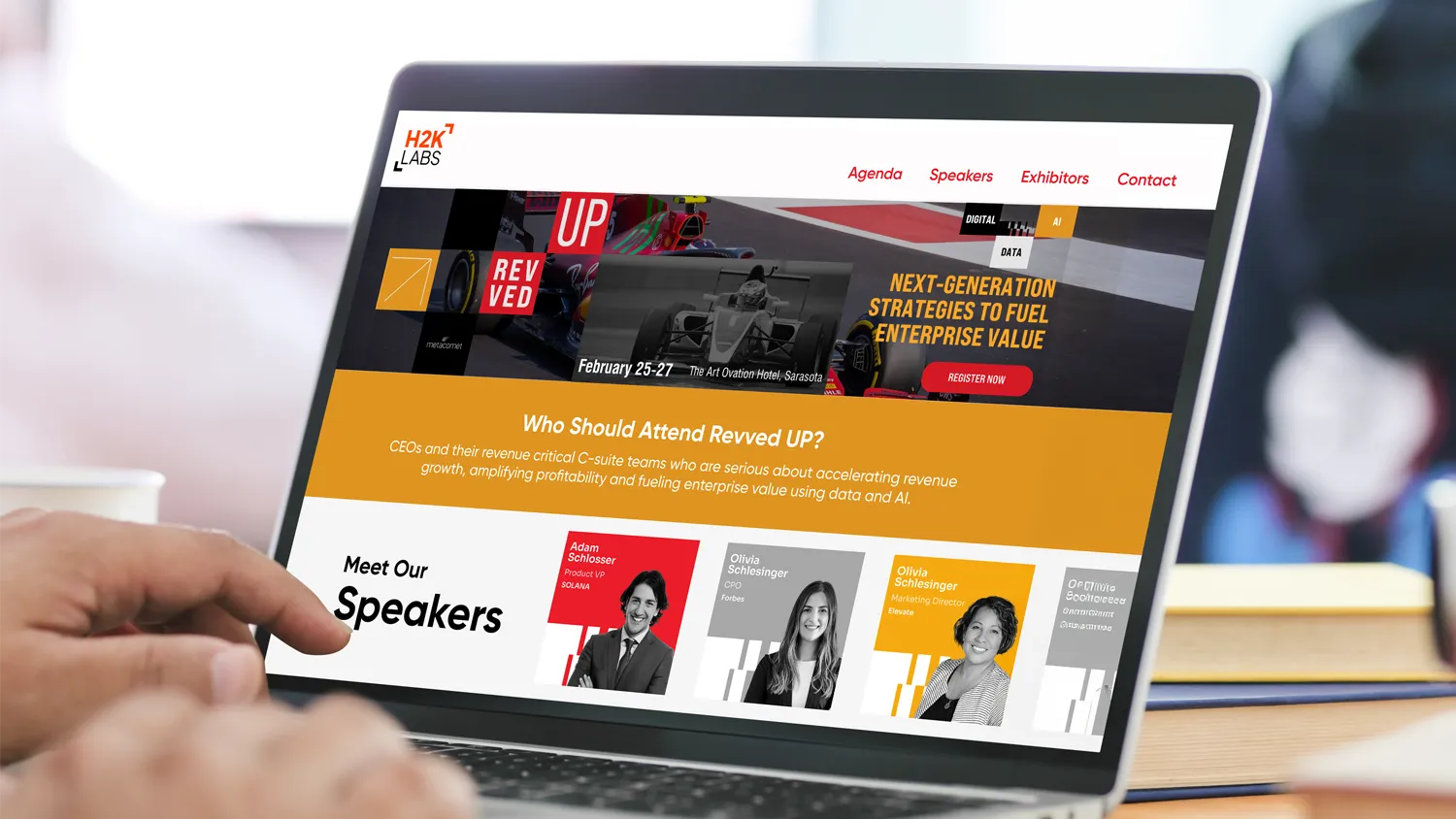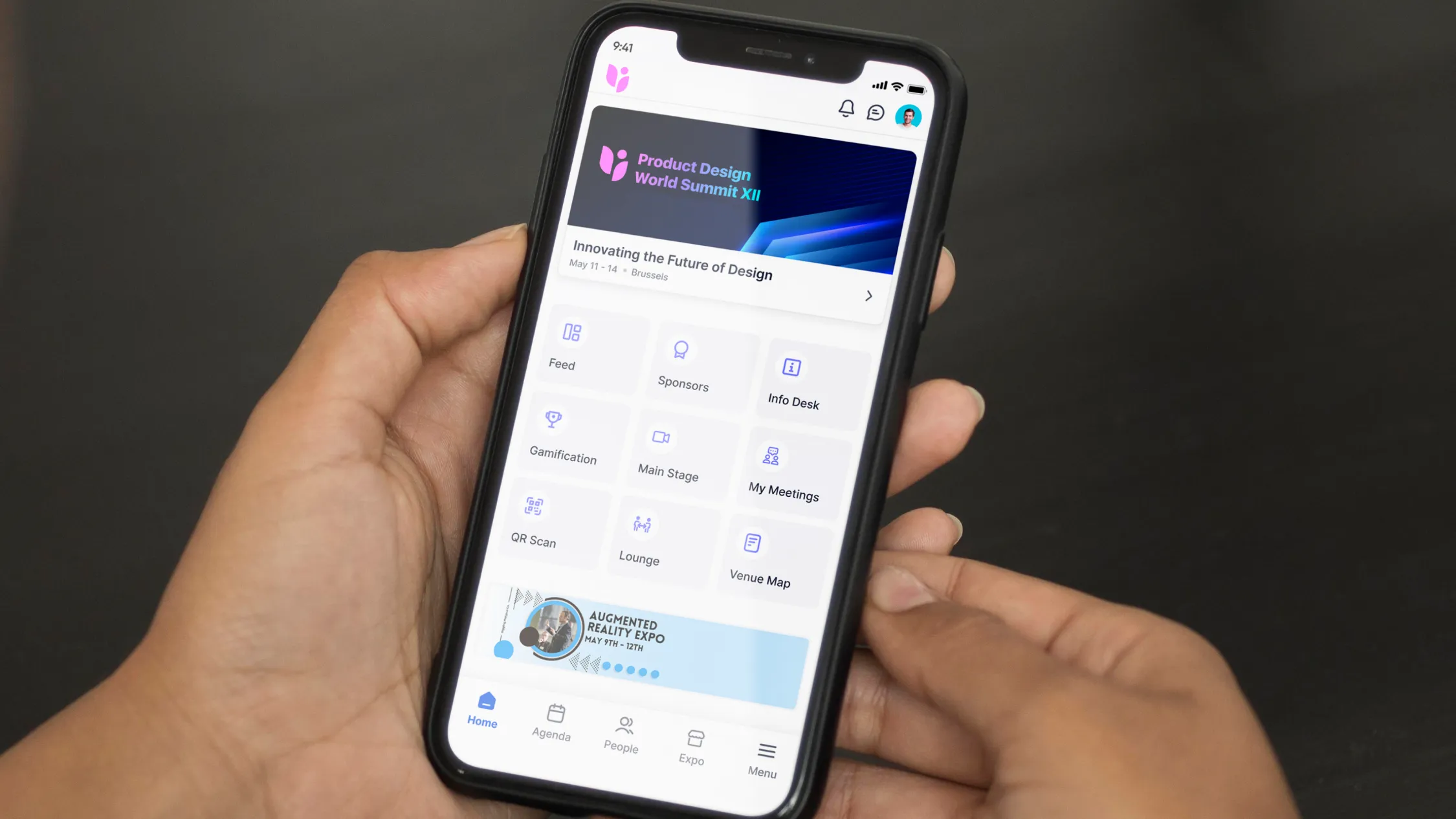If you want your event to feel like your product, a white-label platform is the way to go. White-label means the attendee never sees the vendor’s brand, only yours, across websites, emails, mobile apps, check-in kiosks, badges, and analytics. Below is a practical guide to who offers it, what to look for, and how to decide between white-label and custom-built options, with a special focus on options for large programs.

Which platforms provide white-label event experiences
Several enterprise event platforms offer white-label experiences. In this space, Accelevents, Cvent, Bizzabo, RainFocus, Stova, Swoogo, and vFairs can all support branded experiences to varying degrees, though scope, licensing, and implementation models differ by vendor and tier.

Where Accelevents can benefit enterprises and associations
Accelevents was intentionally built on one consistent data model across registration, onsite, mobile, and virtual, creating a seamless experience for event organizers, attendees, exhibitors, and speakers. The platform combines ease of use with a highly customizable toolkit that scales from single conferences to enterprise portfolios.
- Branding, at scale: Full white label across web, mobile, and virtual with theme controls so every attendee touchpoint looks like your own product.
- Registration and ticketing built for control: Drag-and-drop pages, forms, and badges, unlimited ticket types and discount codes, reusable templates, one-click event registration forms, payments, conversion tracking, group bundles, and conditional logic by attendee type.
- Integrations without add-on fees: Native connectors to Salesforce, HubSpot, and Marketo, plus public REST APIs and webhooks with no fees. See the integrations catalog.
- Unified analytics: Real-time, shareable dashboards tied to the same dataset across onsite and online components, so teams act on one truth. Explore in depth analytics.
- Onsite excellence: Native badge printing, QR check-in, lead capture, CE credits, exhibitor tools, and security controls including SSO, MFA, and audit logging.
Who chooses it: enterprises, associations, and others including agencies, mid-market corporations, and nonprofits running in-person, virtual, and hybrid events. Pricing is transparent with scalable modules and no surprise add-ons. 1,847 customers and growing, backed by a support team that responds in less than 21 seconds, 24/7 and a culture of customer success.

Other platforms that provide white-label experiences
Below are well-known alternatives. Capabilities, packaging, and effort vary, so verify what “white-label” includes for web, email, mobile, and onsite.
- Cvent
Cvent supports enterprise branding across event websites, registration, native apps, and communications. The company has grown largely through acquisitions, and many buyers note that certification paths are common for mastery. Always confirm whether removing the vendor brand, using custom domains, and mobile app branding require higher tiers or professional services. - Bizzabo
Bizzabo offers portfolio-level controls and branded experiences across sites, communications, and its mobile experience. Evaluate which elements are included with your package and whether app-store listings and email sending domains can be fully white-label. - RainFocus
RainFocus serves many of the world’s largest programs and is known for system complexity and cost, with certification training often required. Expect powerful branding options, and plan for a structured implementation to align teams and governance. - Stova
Stova provides enterprise branding across registration, mobile, and onsite. Assess how app branding, kiosk experiences, and email templates are packaged, and whether analytics roll up across large portfolios without heavy services. - Swoogo
Swoogo focuses on marketer-led configuration and branded sites. Confirm the boundaries of mobile and email branding, custom domains, and whether app distribution is vendor-listed or organization-listed. - vFairs
vFairs offers branded event hubs and mobile experiences. Review what elements are truly white-label, especially for apps and transactional email domains, and how onsite components fit into the brand system.
Tip: Make a checklist of web, email, mobile, kiosk, badge, and analytics branding, plus domains and app-store presence, then ask vendors to show each item live with your brand assets applied. Industry guidance recommends planners drive demos with real scenarios and verify costs, limits, and support models.

What “white-label” should include, beyond logos and colors
A credible white-label implementation typically covers:
- Custom domains for public sites, microsites, and short links, plus branded email sending domains.
- Mobile app branding including icons, splash screens, store listings, and push sender names.
- Onsite presence such as event check in screens, kiosks, and badge templates that look and feel like your product.
- Exhibitor and sponsor spaces that match your design system, with lead capture and meeting tools living inside the brand.
- Role-based access and security that respects your internal brand policies, including SSO and MFA.

Benefits of white-label ticketing and registration beyond branding
White-label helps with consistency, and it also drives outcomes:
- Higher trust and conversions. Branded domains, consistent UI, and familiar components reduce friction at checkout.
- Sponsor and exhibitor value. When the event looks like your product, sponsor placements feel native and can command better rates, aided by lead capture and ROI reporting.
- Data quality and speed. A single data model means fewer exports and merges, so marketing and sales work from unified profiles in real time.
- Governance. Central themes, reusable templates, and permissions prevent brand drift across multi-event portfolios.
For a sense of how this translates into day-to-day operations, look at your must-have workflows in ticketing and registration, onsite badge printing, and exhibitor activation, then ask vendors to replicate them with your brand kit.

White-label vs custom-built event apps
White-label platform app
- Pros: Faster launch, proven feature set for onsite, mobile, and analytics, security and compliance baked in, connectors to CRM and marketing systems so you can push and pull data automatically.
- Cons: You work within the vendor’s guardrails for UX and data structures. Deep changes may require vendor services or roadmap alignment.
Custom-built app
- Pros: Pixel-perfect control over UI and proprietary workflows.
- Cons: Longer timelines, higher total cost of ownership, continuous maintenance across iOS, Android, and web, plus you must recreate core event features like session schedules, access control, notifications, check-in, lead capture, and analytics. Many teams find reinvesting engineering cycles into a mature platform yields faster ROI.
Bottom line: For most programs, a white-label platform meets brand standards while keeping speed, integrations, and security intact. If you have a truly unique use case or an embedded product strategy, custom may make sense, but model the ongoing cost carefully.

How to evaluate white-label claims in demos
Industry experts recommend making vendors prove the details with your brand assets and real scenarios. Go in with a script: domains, emails, mobile icons and store listing, kiosk theming, badges, dashboards, and data flowing to CRM or MAP. Verify licenses, services, and any per-app or per-event fees. Finally, confirm support expectations before and during live days.

Final take
If your goal is an owned, end-to-end brand experience that still integrates tightly with your stack, Accelevents is built for it. You get full white label, portfolio control, and native connections to the systems your team already uses, backed by a support team that responds in less than 21 seconds, 24/7. When you are ready to see it with your colors, content, and workflows, request a tailored walk-through.
FAQs
What is the difference between “branded” and truly “white-label”?
Branded often means you can upload a logo and adjust colors on vendor-hosted pages. True white-label includes custom domains, app-store listing under your organization, branded emails, kiosk and badge themes, and analytics without the vendor’s logo. Ask vendors to demonstrate each element live.
Can I use my own email domain and subdomain for all attendee communications?
This should be part of a serious white-label package. Confirm sender authentication and whether transactional and marketing emails can use your domain end to end.
How does white-label affect integrations with CRM and marketing automation?
A white-label front end should still pass clean data to systems like Salesforce, HubSpot, and Marketo through native connectors or APIs so sales and marketing see one record. Verify that there are no integration fees.
Will my onsite check-in and lead capture be branded too?
Yes, if your platform supports onsite modules and theme controls for kiosks, badges, and scanners, plus exhibitor tools. Ask to see the check-in UI and a sample badge rendered with your style guide.
What should I budget for a white-label mobile app?
Pricing varies. Some vendors package app branding at higher tiers or as a service line. During evaluation, get a line-item view covering app branding, store publishing, and ongoing updates. Then model ROI against time-to-launch and maintenance if you were to custom build.

Ready to see your brand everywhere, from first click to last badge scan? Request a demo and we will show your program running as a fully white-label experience.








